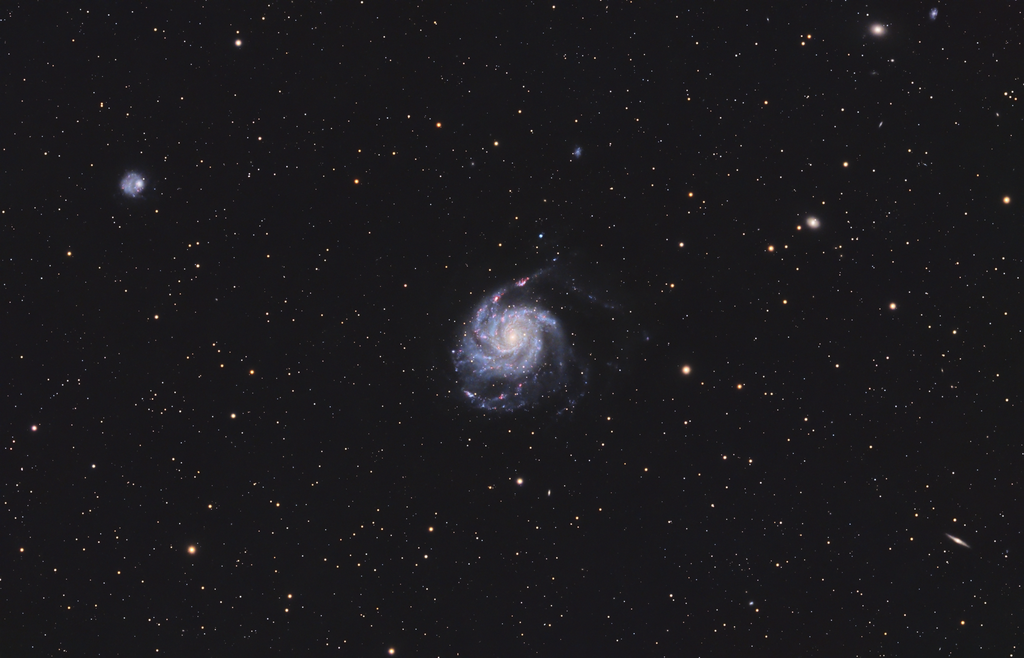My typical workflow is as follows:
Prior to integration I blink through subs and remove any ones with obvious clouds. I keep satellite trails, etc since I generally have a large number of subs so I figure that outlier data gets removed pretty well.
WBPP
Calibration with darks, flat darks, flats for each filter and imaging session. I have a library of my common gains, temps, and sub length for the master dark. The dark flats and flats I try to keep at 2s each so that I don't have to create a new master flat dark each time.
Cosmetic Correction (Hot Sigma = 4.0 Cold Sigma = 3.0)
Subframe Weighting (Custom Formula, FWHM = 25, Eccentricity = 25, SNR = 5, Number of Stars = 25, Pedestal = 20)
Registration
Local Normalization (Top 10 frames, interactive)
Image Integration
Drizzle Integration (2x, Drop Shrink = 0.9, Function = Circular)
Combine RGB
GraXpert or Automatic DBE (Seti Astro)
BlurXTerminator (Correct Only)
Find Background Function (Seti Astro)
Image Solver
SPCC (Average Spiral Galaxy, Correct Filters and QE Curve Selected, Use Background as Region of Interest for Background Neutralization)
StarXTerminator
Statistical Stretch (Target Median ~0.10, Automatic Convergence, Curves Boost ~0.25)
Generalized Hyperbolic Stretch (Use for Saturation Adjustments)
Histrogram Transformation (Stars to taste)
Generalized Hyperbolic Stretch (Use for Star Saturation)
Pixel Math to Rescreen Stars
NoiseXTerminator (Generally somewhere around 0.6 - 0.8)
BlurXTerminator
Luminance
BlurXTerminator
StarXTerminator
Statistical Stretch (Target Median ~0.10, Automatic Convergence, Curves Boost ~0.25)
Histrogram Transformation (Stars to taste)
Pixel Math to Rescreen Stars
NoiseXTerminator (Generally somewhere around 0.6 - 0.8)
LRGB Combination to bring in Luminance
Minor Adjustments to Curves with Galaxy Mask and Star Mask
SCNR (Green, Average Neutral, 0.5) -NOT ALWAYS, DEPENDS ON THE IMAGE
ACDNR (Toned down a bit to StdDev = 1.2, Amount = 0.30)
Final Color Saturation Tweaks
Resample (50% if using the 2x Drizzled Images)
Profit???
Image Link: https://www.astrobin.com/s17m34/
Data Link: https://drive.google.com/drive/folders/1HJ0qrV-SFzTkuoYYhlmuoksi2oYJr3MC?usp=sharing



